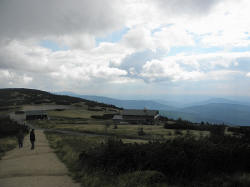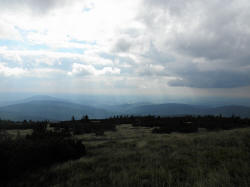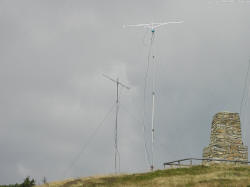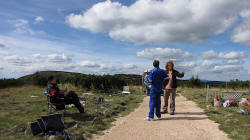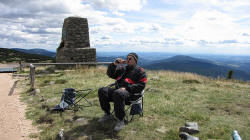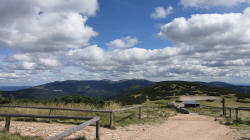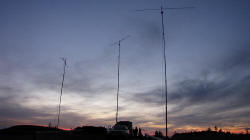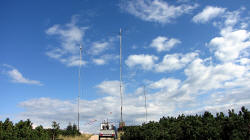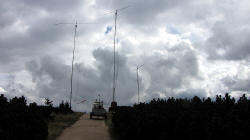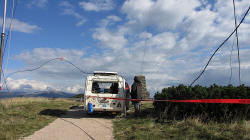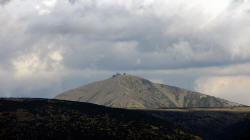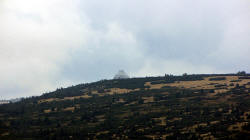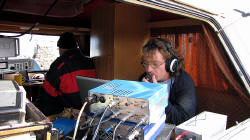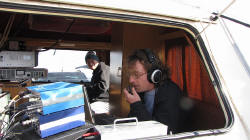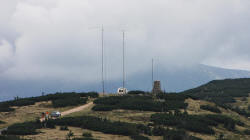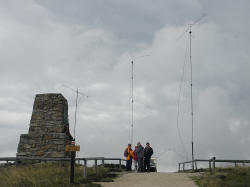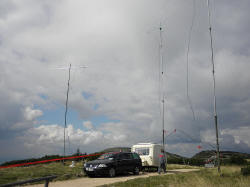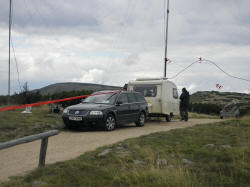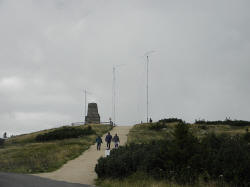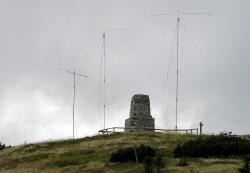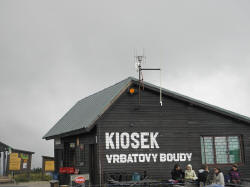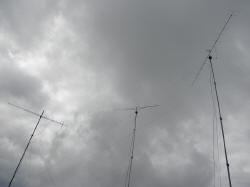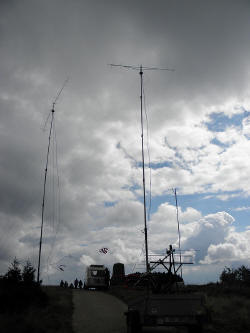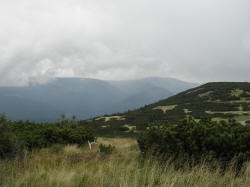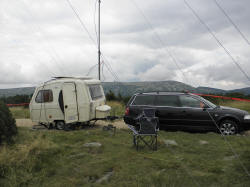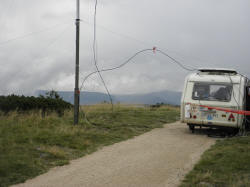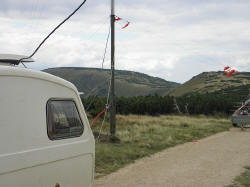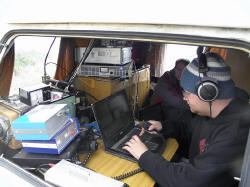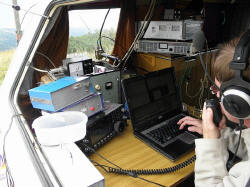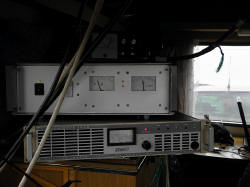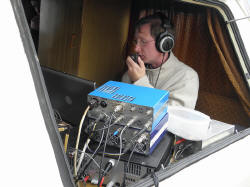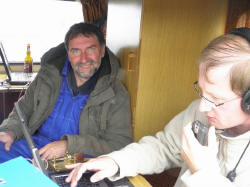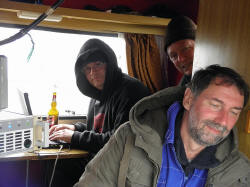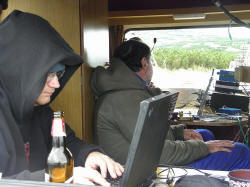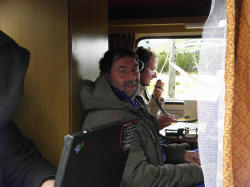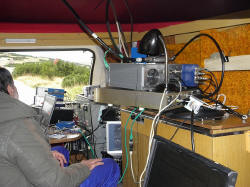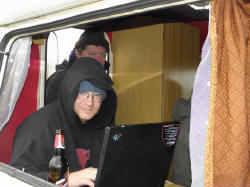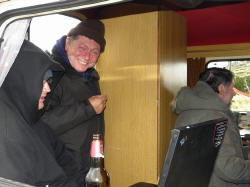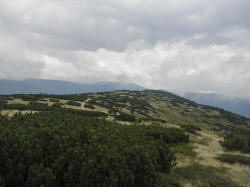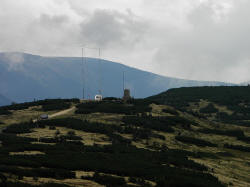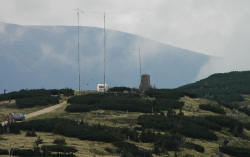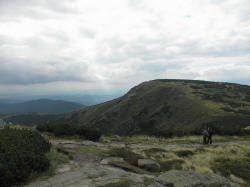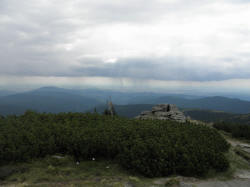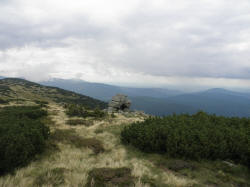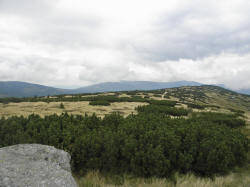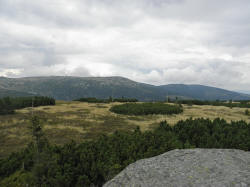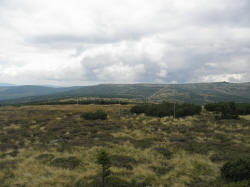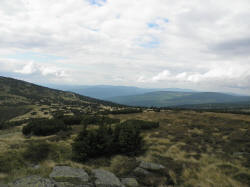|
OK2KKW alias OK2A Comeback of QRM Torture at 144 MHz For translation from Czech you can use the Google translator. It all started during the Field Day this year when Jirka OK1HWU dropped by our portable QTH and with the sight of the top of the hill being all flat and hairy with tall trees all around, he made a proposition for a change. In order for us to find out what a real contest location is all about, Jirka would lend us his portable QTH known as “Zlate Navrsi” high up in the Giant Mts. (Krkonose in Czech) for the upcoming September IARU VHF contest instead. The initial arguments that highlighted the importance of safety and comfort of one’s own shelter and domestic environment at Spaleniste together with a barrel of beer were eventually suppressed with the view of trying out something new. And perhaps more importantly, at least once we wanted to avoid the trouble with the noise that is usually spread all over the band and is caused by a seemingly minor defect in the circuitry of our neighbors’ (OL7C) equipment. By the way, our contest locations are only 3 kilometers apart. Furthermore, we were also tempted to use our new contest call that we have gotten to commemorate our 20th anniversary of being in the air during VHF/UHF/SHF contests under the original OK2KKW call sign. Nevertheless, the preliminary plans for the preparation activities were brought to light about a month and a half before the kick-off.
Organization and planning
It has been four years since we last went on the air on 2
meters during a contest, of course with the exception of using 144 MHz as
an IF for higher bands and the Marconi Memorial Contest that we try not to
miss for the fun we have on CW (the reasons for which can be found
here).
After all those years, we had to put together a reasonable antenna and
radio setup in order to be able to sustain the kind of competition that is
on 2 meters these days. OK1DIX accidentally found in his garage a 10 el.
DK7ZB beam made by OK2BJL and a 16 el. 10-meter long beam by OK1RI that
must not have been used for at least three years and was in bits and
pieces and thus had to be assembled again to check for performance.
Originally, we planned to use a set of four 7 el. DK7ZB’s stacked on top
of one another to fill up the third azimuthal sector, with a pair of
Jirka’s 10 el. beams by PA0MS being in store just in case the vertical
stacked beams would not work properly. This meant that two major azimuthal
sectors remained the same as in the 2007 IARU VHF contest in that one
sector was covered with one of the beams fed by a 1kW power amp (owned by
OK1TEH) supplied with
SD2942 power transistors, all produced by
Italab Company and available for
purchase from I0JXX while the other azimuthal range was controlled with
another antenna beam which was hooked up to OK1DIX’s amplifier that can be
considered to be an
old-timer
with a GU34 tube that is capable to deliver 900 watts out PEP. At last but
not least, the third range of directions was left out to a PA0MS beam
connected to a small 400-watt amplifier “made by Kotel” with a GI46 tube
inside – a product of OK1BAF, our IF expert. The realization of our
expedition to the Krkonose Mts. was entirely dependent on whether or not
we would receive a special permit from the administration of the Krkonose
National Park to gain access to the peak of the mountain with two vehicles
and accompanying small trailers and to temporarily erect three antenna
monster towers with antenna beams on top of them. The reason for such
strict rules is the fact that this place is located in the zone I. of the
Krkonose National Park with the highest restrictions imposed on the free
movement of people and vehicles, not even mentioning the fines for
littering or wandering off the hiking trails. God only knows how Jirka
managed to get the permit for entrance by car and for occupying space
other than hiking trails, but when
we all met at a pub weeks
before the start of the contest, Jirka told us it has been secured and we
could start getting everything ready. Although the permit was valid only
for two vehicles, it included the use of a small trailer for each. Thus,
we were able to plan for bringing all the necessary things with us without
having to worry about running out of space. Organization versus Disorder You know, at first everyone likes to talk about setting up piles of antennas stacked vertically and horizontally, and when the contest is just around the corner, we all manage to barely start on time with a few single beams. And this was exactly the case here as well. Why? All of a sudden, OK1BAF was called off to spend the contest weekend under the ground somewhere in Ostrava while OK1ZAD’s attendance was cancelled due to his work duties somewhere overseas. Furthermore, for some reason OK1JFR decided to stay at home and Venca OK1XNG had still not recovered from an illness that forced him to stay in bed. In addition to slimmer attendance, during the latest testing of the small amp, we had to cope with the dying out GI46 tube and had to re-start it every time we heard the blast inside the amp. Unfortunately, the new tube that was promised to be available for the contest was forgotten in OK1ZAD’s home, and so we had to be content with the old one. The old saying “a bird in the hand ….” was directly applicable in this case. Another problem was revealed right after we arrived at our contest location in the mountains when we realized that a 200-kilometer trip made by Lada OK1DIX to the home of Venca OK1XNG to fetch antenna rotors was partially in vain because with the rotors he accidentally forgot to bring the mounting mast for the antenna beams to secure proper rotation. Also, we discovered that some of the guy-wire winders were missing based on the number assigned to each one. In addition to all the unpleasant discoveries at the scene, we noted that the triple-phase power plug that we put onto the extension cord did not match the socket inside the house where we got the permission to get hooked up to the mains. Finally, as we were trying to affix Jirka’s PA0MS beam to the short rotation mast on the tower, the U-clamp on the antenna boom was too small to fit onto this mast and thus we had to use a different U-clamp that we were lucky to have with us as part of the 23-centimeter band setup which was left in the caravan from the last contest. The aforementioned PA0MS vertically-stacked duo was reduced to a single beam due to the lack of strong arms and hands that are needed to erect towers carrying more complex antenna systems. We left our homes as early as Thursday evening and reached Jirka’s home QTH in Vrchlabi (JO70TP) just before midnight where we spent the night. The next morning, we set out for the top of the mountain called “Zlate Navrsi” in the grid square JO70SS. At first sight, it was a nice looking portable qth indeed with the directions between 120 to 250 azimuthal degrees being wide open. However, our second glance into the west suppressed the initial optimistic exhilaration as we immediately realized that two peaks that were close by and one of which was about 30 meters higher substantially blocked our view and thus it was reasonable to expect a suppression of signals coming from the west. The northern range of directions didn’t evoke much optimism either with the northern frontier being higher in elevation and the same was true about the peaks in the distance to the east of our contest location. During the contest, our suspicion of being disqualified from joining the team of top performers by losing a substantial sum of valuable points for contacts with DL stations which were not made because of the two hills peaking over the west was confirmed. And this statement holds despite the decline in the participation of DL stations, which especially in this contest represent a significant chunk of the points needed to win or to be among the top five in the country. In case you are interested to find out more about our contest location, you can check the two visibility maps and pictures with graphical representations of the terrain profile below - one for the Zlate Navrsi peak and the other for SN7L who were only 4 kilometers due NNW yet within the same locator. You can see the differences for yourselves. Eventually, the guys at SN7L ended up with 50 thousand points above and beyond our final score, primarily because of having an easier access to DL.
The Contest We were ready to roll about 10 minutes before the start. The kickoff with our new contest call OK2A was made by David OK1RK. The first hour was very prolific with 80 contacts which we were quite happy about since very seldom do we break the rate of 55 QSOs during the initial hour of operation at Spaleniste in JO60JJ. At exactly 15:00 UTC the lights went out and we were destined to be cut off from the mains for the following hour and a half. Fortunately, we were well prepared for such a situation having brought with us a Honda power generator which we cranked up after making appropriate arrangements to run at least one power amplifier nearly thirty minutes after we went off the air. Shortly after 6 p.m. the power was back on and we were able to continue with all three antennas and power amps as originally planned. Nevertheless, the loss we incurred during those 30 minutes of silence which is estimated at around ten thousand points was never regained. Obviously, we can not produce an objective judgment as to how good or bad the Zlate Navrsi peak is right during our first contest there. Yet, it was clear that the west was weaker compared to other directions like S and SE from which we were getting series of calls by stations from 9A or YU coming in very strong. We noticed that the propagation conditions towards Slovenia and Italy were better only after Sunday noon. Once in a while, we were successful in making a QSO into the Baltic area. We also heard LY3UE and EW1WA but our attempts to make a valid QSO with these two failed, perhaps due to insufficient power output on our side. In the meantime, OL4K switched from a standard SSB to QRM mode in which they generated spurious emissions fully comparable to those produced by OL7C. The distance between OL4K and us was roughly 10 kilometers, yet the interference was quite a nuisance even after we made a phone-call to OK1DOM. OK1KOB began their QRM tour in the evening (bi-polar power amp driver probably lacking appropriate bias-voltage supply circuit needed to be used to drive GS35 tube PA) and finally disappeared sometimes in the early morning hours, which was about the right time for the band to clear up since I just got to the operator seat and the fourth call I received was from guys at G4LIP running under G8P. Shortly after that I was approached by Bob G0KPW hidden behind the curtain of M6T which added another 993 points to the total. These were followed by PA6NL and other Dutch stations. The most active interferential troublemakers woke up in the morning and the band was quickly filled up with noisy splatters that grew in intensity to the point at which even David OK1RK, who has extensive experience with QRM during HF DXpeditions (e.g. PZ5D), calls it a day and turns the microphone to whomever is in the nearest vicinity to continue fighting with the mess. It seems as if the quality of our signal was way too high which was to our detriment in that we were not able to keep our frequency even with 1 kW out. SSB splatters coming from OL4K and some others extend even to the CW portion of the band. We were not successful in finding a clear spot even as far down as 144.020 MHz. We were forced to run zigzag up and down the band to settle down at least for a little bit to make a few reasonable contacts. Despite the nuisance with the splatters, I managed to make a few nice QSOs into Italy and got a return call from TK5EP/P at a QRB of 984 km. His signal was peaking S5 at times and I could eventually log him in having him repeat everything at least five times to pick it up in between the QRM. What to say as a final word? The final score is not precisely what we had expected. Our performance in this contest in 2007 from Spaleniste was only 7,000 points below that of this year’s results. On the other hand, we were quite satisfied with two dozens of YU stations in our log as well as quite a few Italians with an average of 800 km. And speaking of average distance, this time it was the highest we have ever achieved in the history of OK2KKW contesting, surpassing 360 km/QSO. For those big guns who reside in Moravia, this may not seem all that fancy. But for your information, our average distance per QSO that we ordinarily accomplish at Spaleniste in JO60JJ in the Krusne Hory Mts., thus being much closer to DL, rarely (if ever) exceeds 320 km. There is one more remark that I would like to make concerning the mutual QRM with SN7L who were located only 4 kilometers NNE from Zlate Navrsi. Those of you who would expect unbearable QRM on both sides would simply go wrong. It was prior to the beginning of the contest that we agreed to stay at least 100 kHz away from each other, and believe it or not, it helped so that neither one of us noticed the substantial QRM presence of the other. See, how IF crystal filters can be of great use when employed by both parties to the potential dispute? This, however, did not deter OK1IA from shouting obscene expressions regarding the quality of our signal. I would be greatly interested in finding out how many of those who run such sophisticated machines as IC7000 or FT100 were disappointed at the quality of our signal due to receiver overload; especially when they discover the true identity of OK2A being actually those guys from OK2KKW and subsequently file an official complaint, hi. On the other hand, I must admit that the quality of modulation generated by the IC7600 was not the best in the world, as we had checked earlier. At least we have ascertained the signal parameters and for sure can rule out the presence of any side splatters or any spurious emissions of any kind.It took us a couple of hours after the closing bell to pack everything up. We got back home about two hours before the usual time of arrival – i.e. shortly after midnight, leaving enough time to take a quick shower and still be endowed with some 5 hours of good-night sleep to get the so much needed refreshment after 3 hours of sleep I had Saturday night. And Monday morning, off for work.
73s and see you all on the VHF/UHF/SHF bands A co napsali další aktéři? OK1VPZ:
OK1HWU: What can I say?
For the first time in my life, I got a chance to learn how to operate
three antenna systems simultaneously. It’s impossible to fall asleep or to
get bored even at night. The need to keep checking weak signals coming
from different directions and playing with the antennas trying to decide
which one is closest to the desired direction kept me busy at all times.
Also, for the first time, I got to feel what it’s like to run QRO in a VHF
contest which opened up a whole new world of DXing to me. OK1DIX: There is not much I can add to all this. I did not spend a whole lot of time behind the TCVR knob and therefore cannot make any objective judgment about it all. To me, it looked like the propagation conditions were below average, especially towards the west. Although the interference and the overall mess was getting obnoxious at times, it did not get as bad as it normally gets with OL7C in JO60JJ. SN7L’s signal was not all that bad although some interference was apparent once in a while. I would also say that having taken into account the propagation and overall contest activity in Europe, we would’ve been worse off had we decided to stay at Spaleniste in JO60JJ.
I regret to admit
that there were minor problems with the quality of our signal due to
infiltration of RF into the microphone connector of the TCVR. As it seems,
the output signal did not get distorted because of that, which meant that
it could be considered as a minor flaw. As far as others are concerned,
after several years of our absence on the 2-meter band, we have noticed
that the majority of stations have increased their output power. Not only
FT100 but also FT847, IC746 or other similar gear is no longer capable to
handle the level of RF that is omnipresent on the band during contests and
therefore is not suitable for this kind of operation. As a result, it
becomes true for many contest participants that they are no longer able to
derive the kind of joy and satisfaction they expect and are thus deterred
from their intentions to join the crowd. Lada OK1DIX OK1KN: Since, this time I did not go on the air at all, there is not much I can say about the whole event. My overall impression was rather positive, although I have to say that the warmth and comfort inside our cozy little cabin at Spaleniste would have been better than the cold premises rented at Jilemnicka Bouda. On the other hand, the 2006 A1 contest at Klinovec can never be beat. :-) kn
Contest result
achieved by OK2KKW / OK2A team:
|
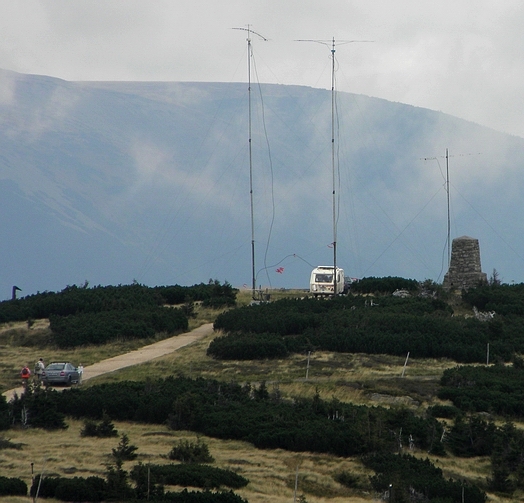
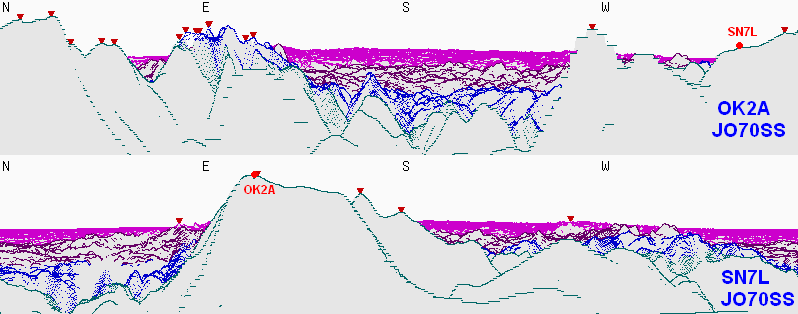
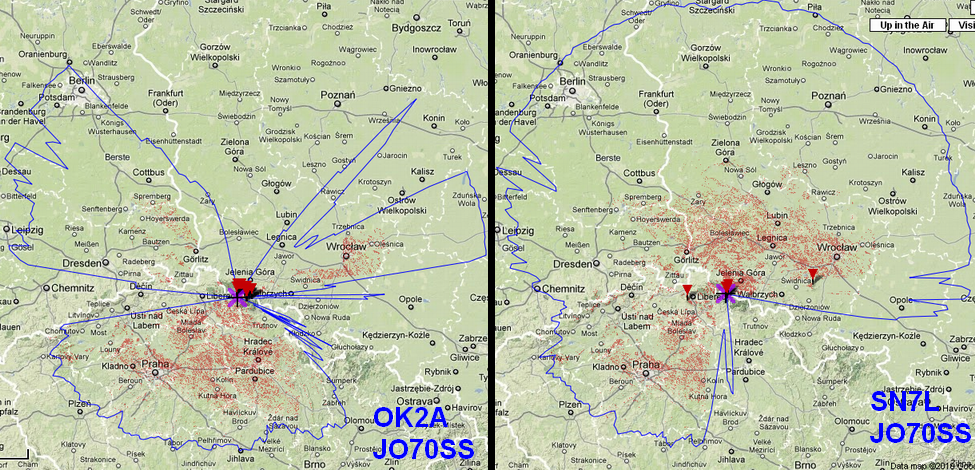

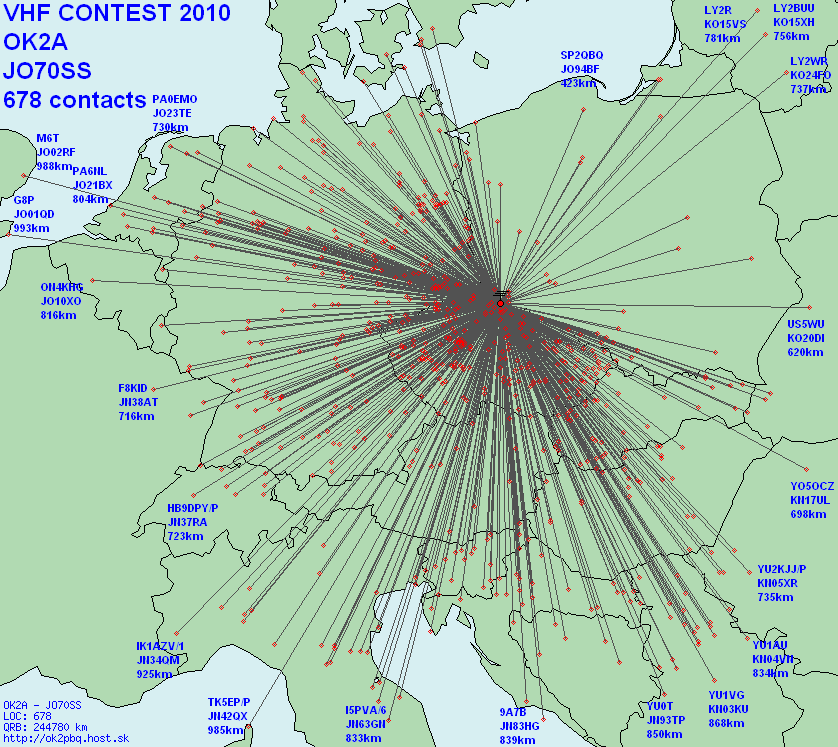
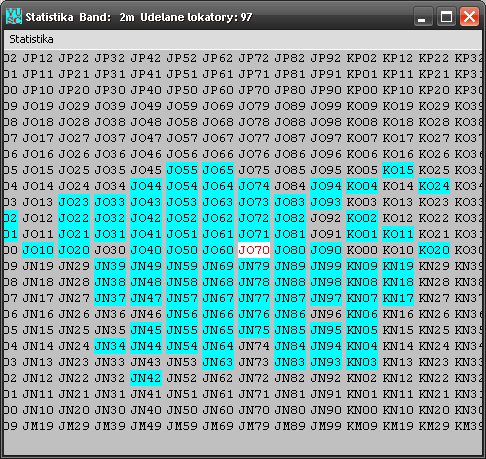
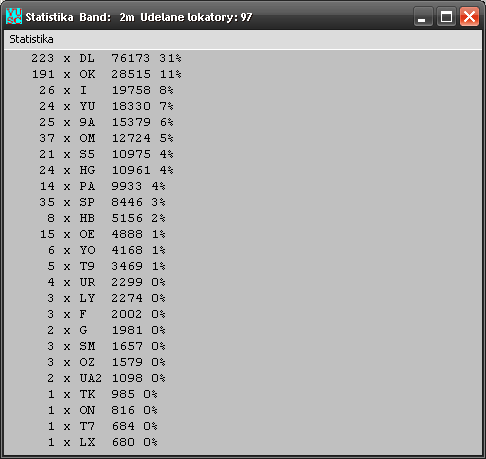
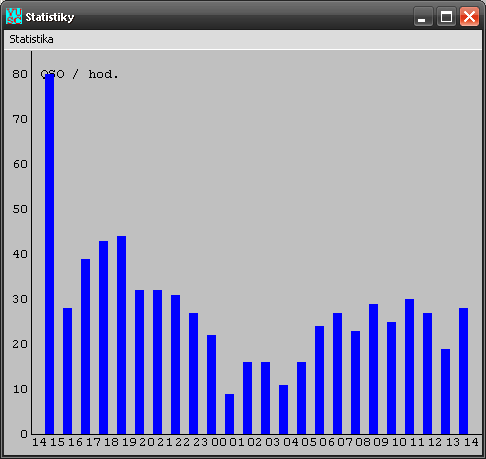
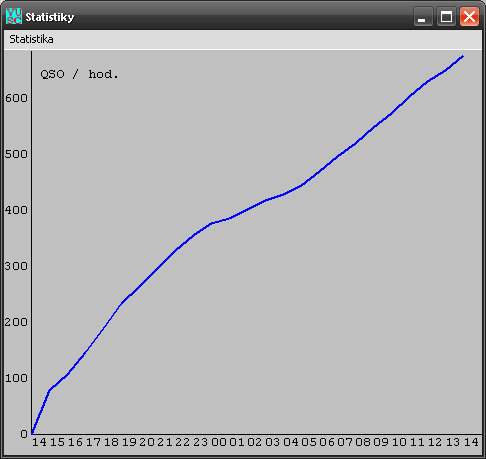
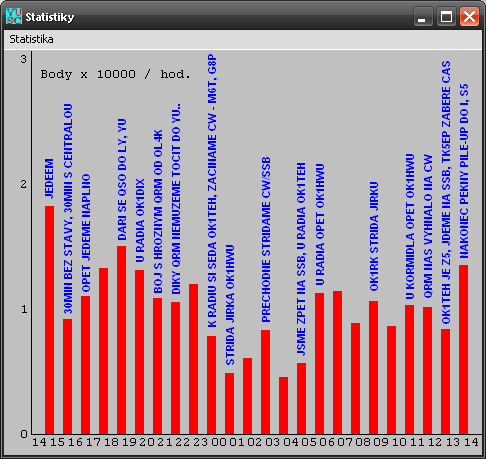
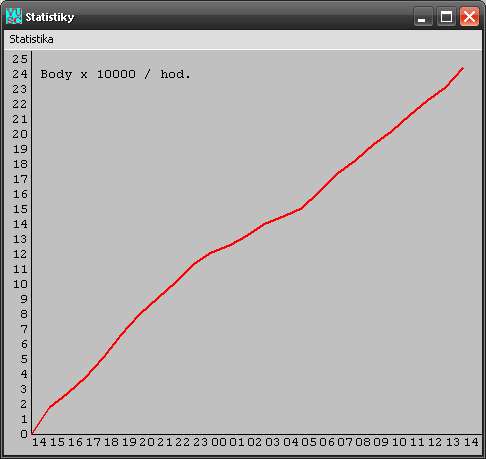
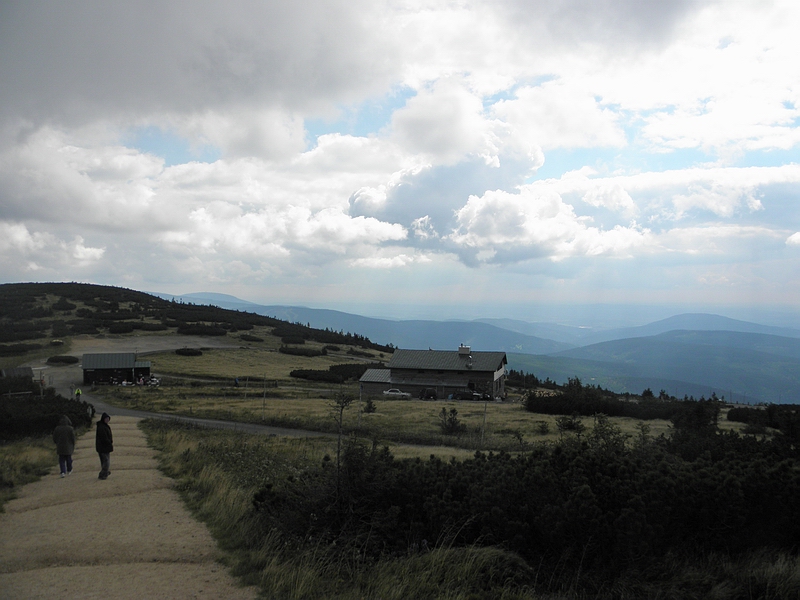 View fro our QTH to Southeast to Vrbatova bouda building, from where we
had 2 phases of electricity.
View fro our QTH to Southeast to Vrbatova bouda building, from where we
had 2 phases of electricity.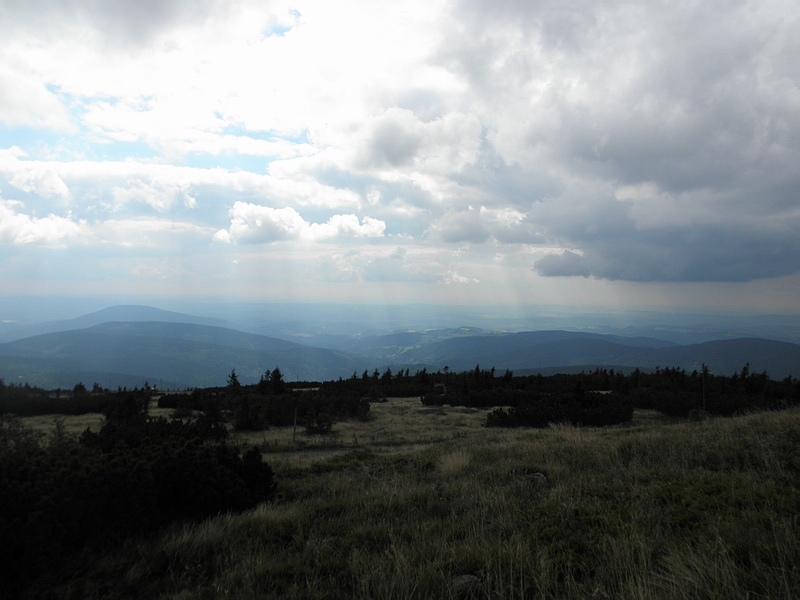 This is the only one real open direction to South. Even Prague, 100km
away, was visible during night.
This is the only one real open direction to South. Even Prague, 100km
away, was visible during night.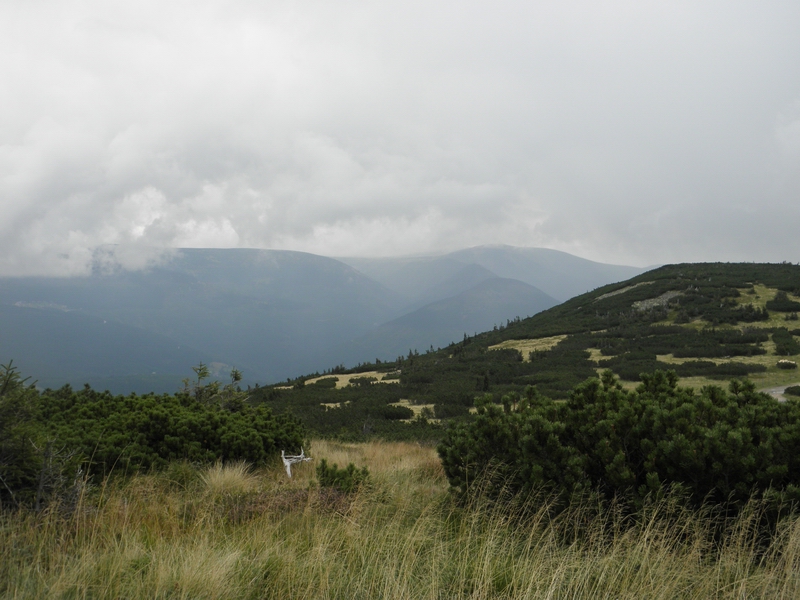 The North and East has covered by higher hills, Snezka peak (highest in
the OK) on the East side has covered by clouds.
The North and East has covered by higher hills, Snezka peak (highest in
the OK) on the East side has covered by clouds..jpg) Lot of elements has been forgotten in our stable contest QTH, so
improvisations was the only way..
Lot of elements has been forgotten in our stable contest QTH, so
improvisations was the only way..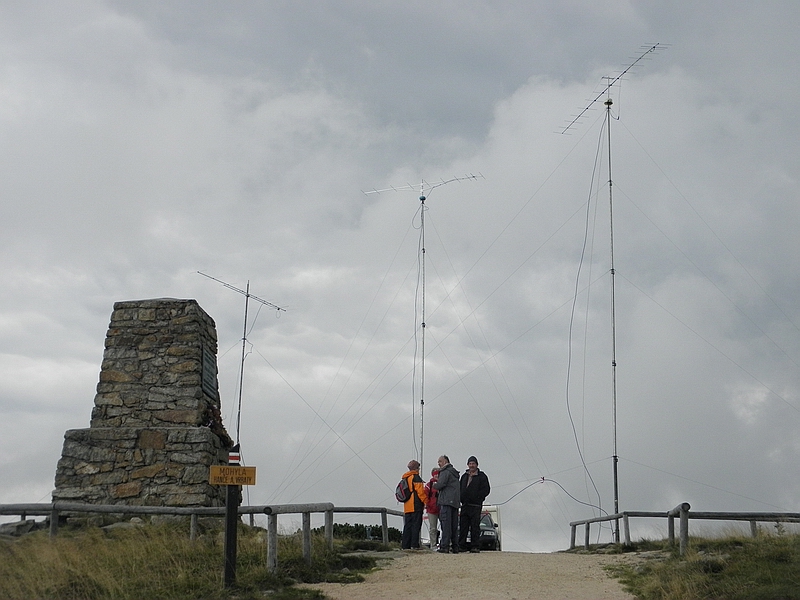 Our antenna setup
Our antenna setup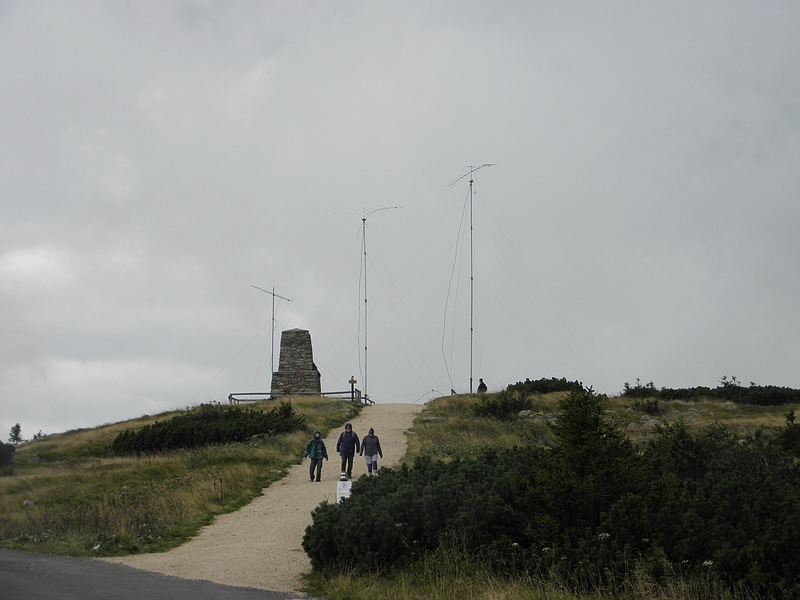 Lot of turists from more countries visited our contest QTH.
Lot of turists from more countries visited our contest QTH.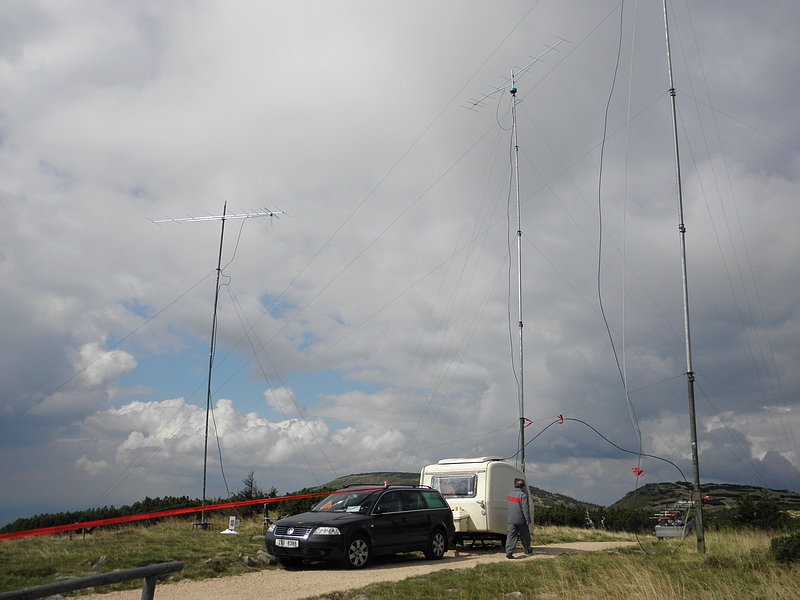 PA0MS was 9, DK7ZB 18 and OK1RI even 20m above ground level.
PA0MS was 9, DK7ZB 18 and OK1RI even 20m above ground level.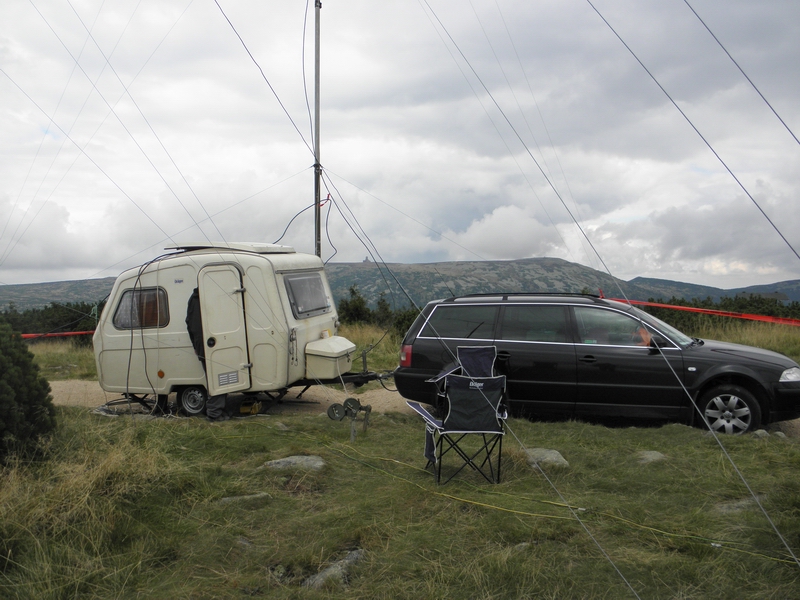
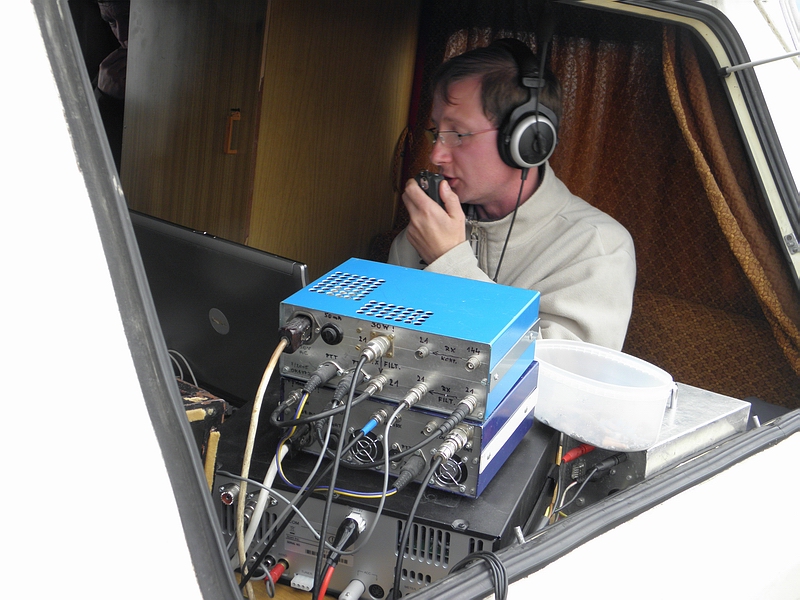 CQ Contest, Oscar kilo 2 America. By Jirka, OK1HWU
CQ Contest, Oscar kilo 2 America. By Jirka, OK1HWU 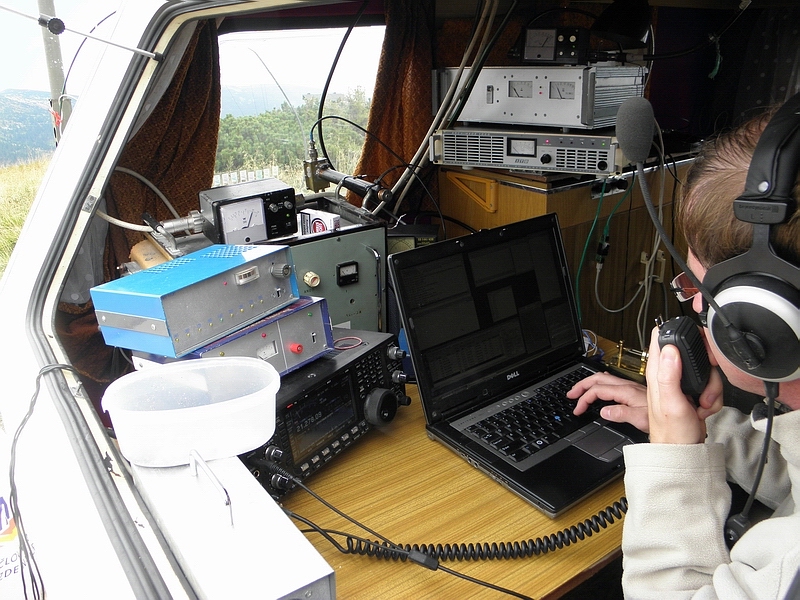 Our HW setup was almost the same as 3 years ago: IC-7600, H.M.
transvertor Sitno with IF crystal filters made by OK1VPZ, behind old PA
with GU34 tube, tuned to 75 Ohm
Our HW setup was almost the same as 3 years ago: IC-7600, H.M.
transvertor Sitno with IF crystal filters made by OK1VPZ, behind old PA
with GU34 tube, tuned to 75 Ohm
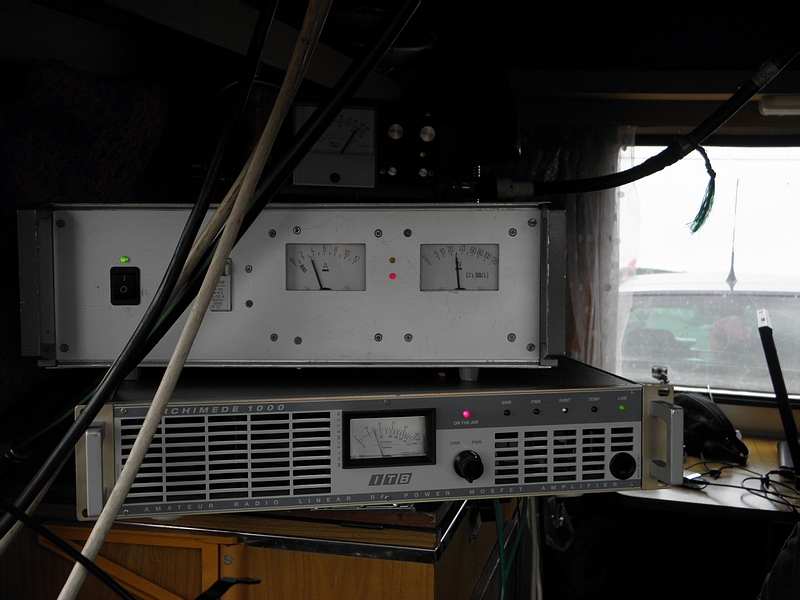 SSPA
SSPA 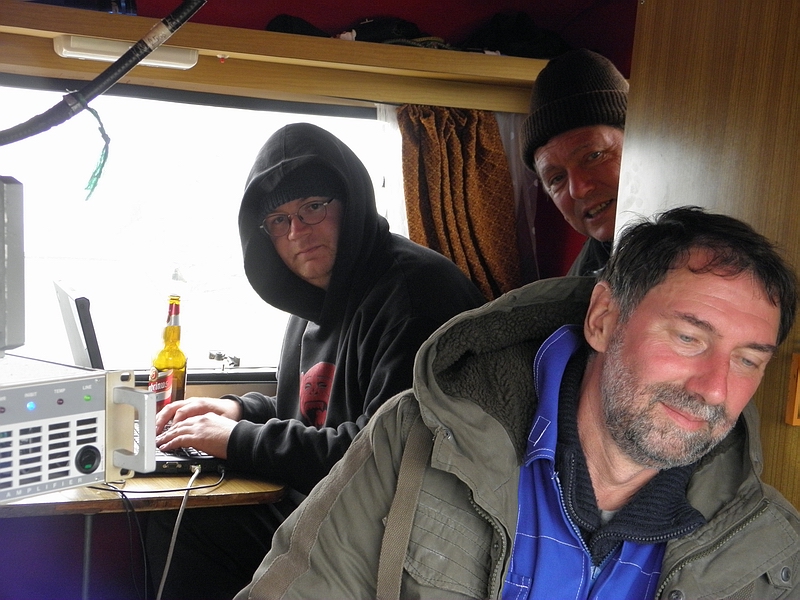 September Contest in the 1413m asl was not beach side, temp in the
night was below 0
September Contest in the 1413m asl was not beach side, temp in the
night was below 0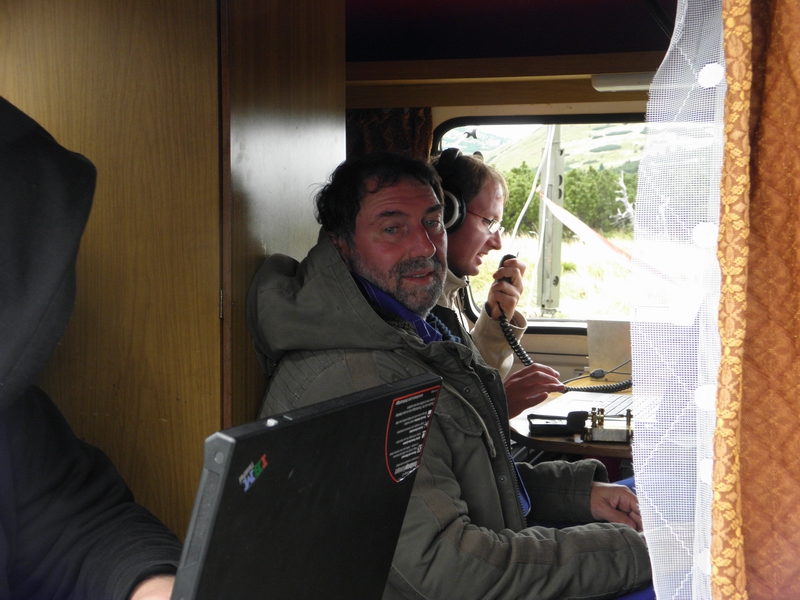
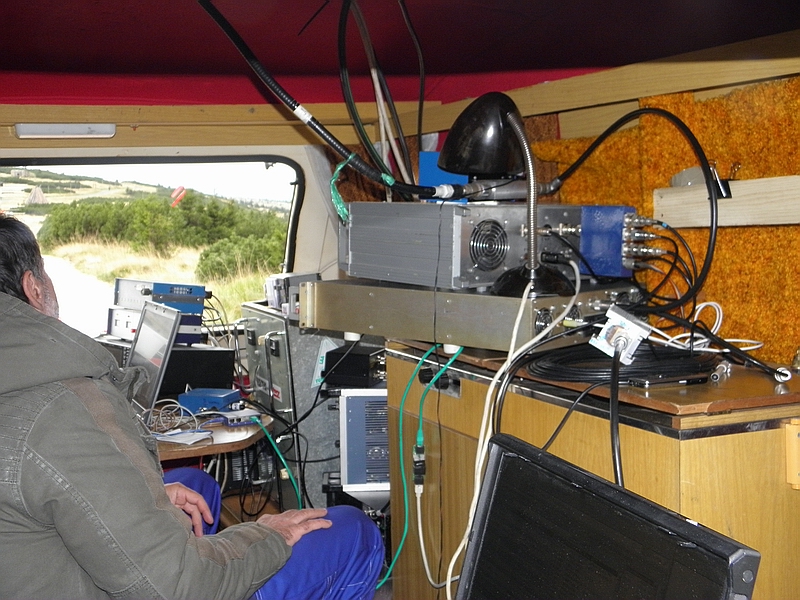
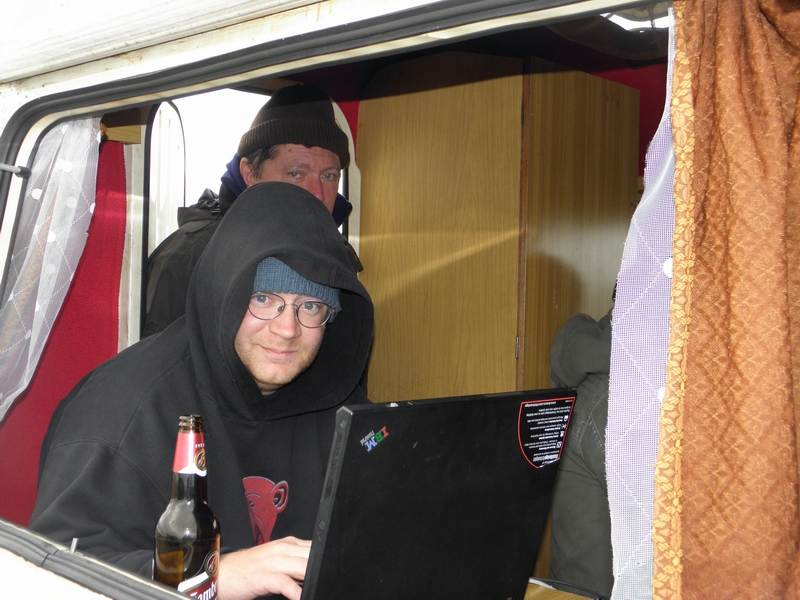 OK1TEH
OK1TEH 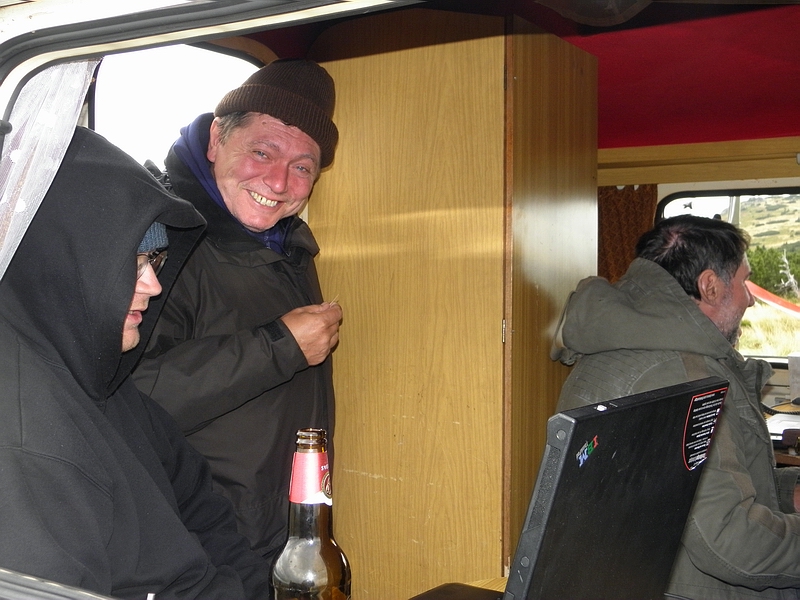
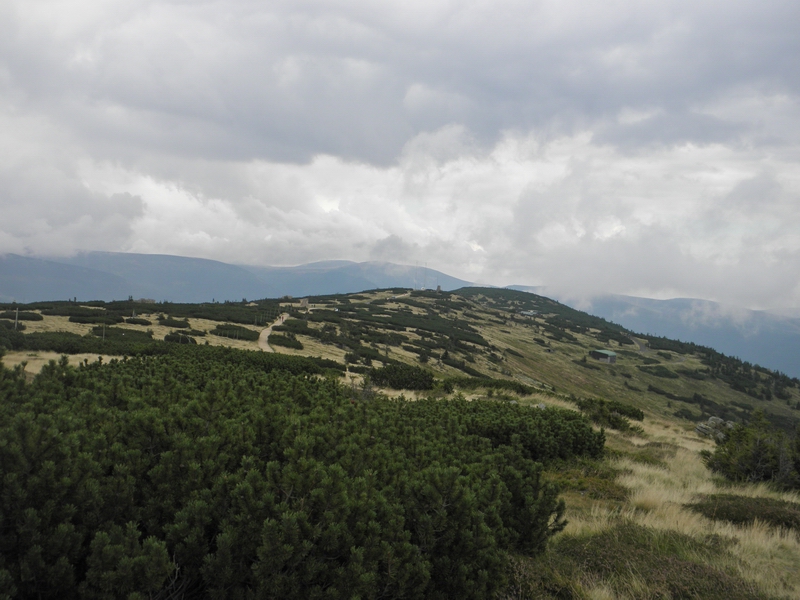
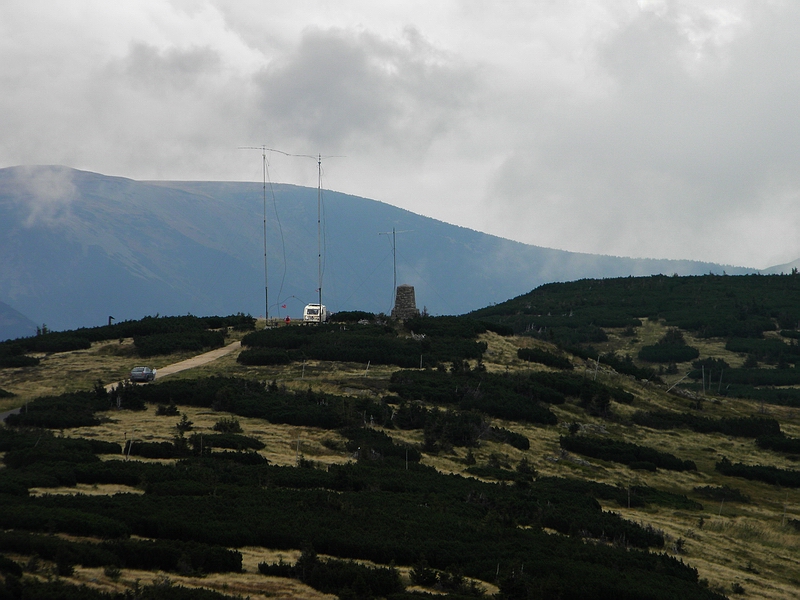
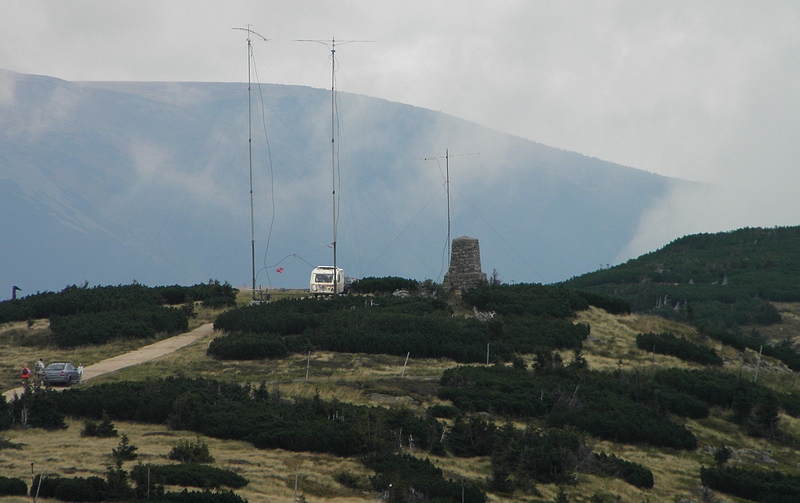
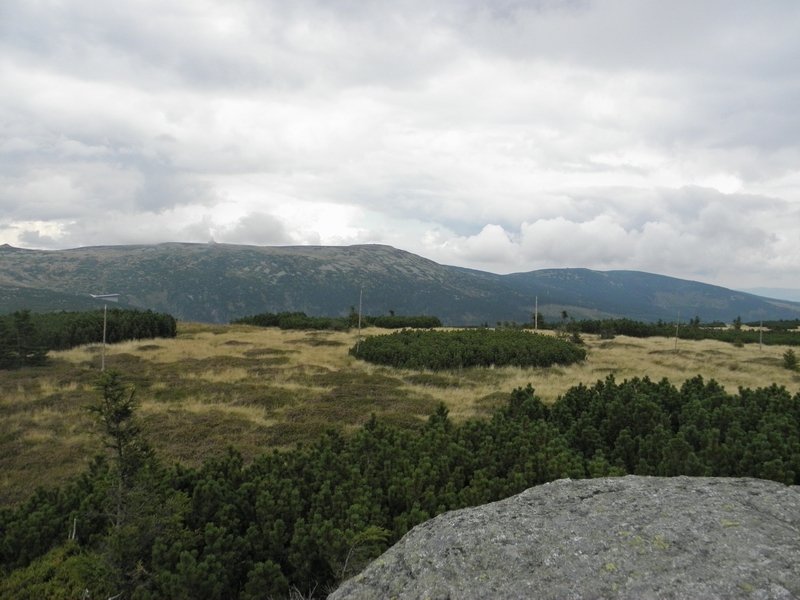
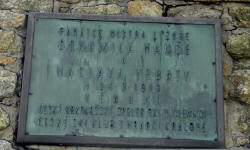
_small.jpg)
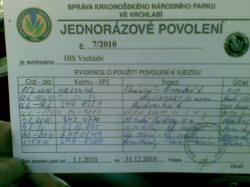
_small.jpg)
